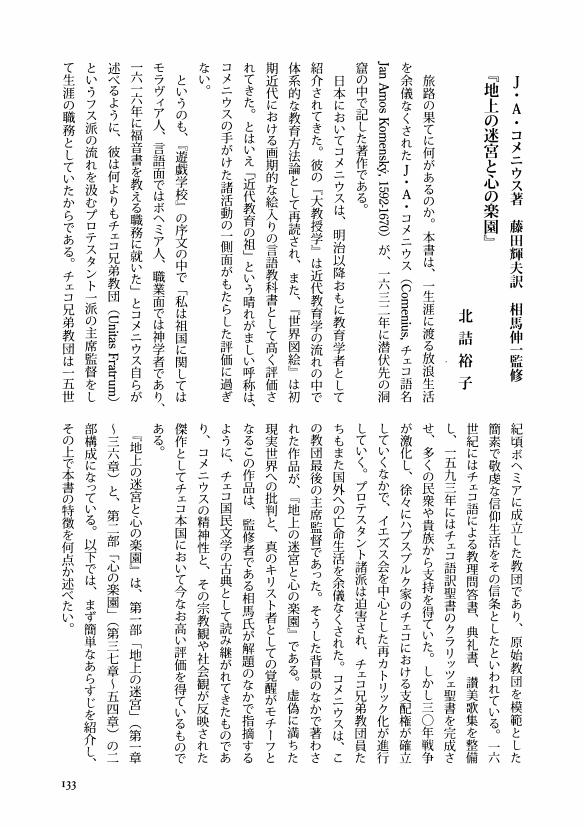2 0 0 0 OA 透明な言語・不透明な知性 コメニウス『光の道』における光のメタファー
- 著者
- 北詰 裕子
- 出版者
- 教育哲学会
- 雑誌
- 教育哲学研究 (ISSN:03873153)
- 巻号頁・発行日
- vol.2007, no.96, pp.22-41, 2007-11-10 (Released:2009-09-04)
- 参考文献数
- 68
This paper examined J. A. Comenius' The Way of Light as a theory of language in the metaphor of light, one that is crucially related of cognition of things.In The Way of Light, Comenius expresses the world and human beings in a metaphor of light. External light illuminates all things and clarifies every thing. It overcomes every darkness in the world. On the other hand, Internal light means intellectual light in particular. This light overcomes darkness of ignorance in soul, and intellect has an opaque characteristic. Opaque intellect receives light, blocks its further penetration, keeps the truth of things within itself, and reflects and scatters it around the world again. It can be said that working of this intellect is a function of the language. From the point of view of human history, Comenius said that the scatter of light spreads through cognition, conversation, a meeting of a church, books, printing and the art of navigation. Furthermore, this process is expansion of education to give light for human mind.Comenius considers the cognition of things from the perspective of light because he has an assumption that every visible thing in the world has truth of God. And ideal universal language is designed as a medium to represent the truth of things.In other words, what is considered as the language in Comenius has triplex meanings : a language that articulates the light as opaque intellect, a language as the world itself has, and a transparent language that represents the world. These triplex meanings of language are deeply related to the educational thought of Comenius.
2 0 0 0 OA 文字と教育の思想史(Colloquium 2)
1 0 0 0 OA J・A・コメニウス著 藤田輝夫訳 相馬伸一監修『地上の迷宮と心の楽園』
- 著者
- 北詰 裕子
- 出版者
- 教育哲学会
- 雑誌
- 教育哲学研究 (ISSN:03873153)
- 巻号頁・発行日
- vol.2007, no.95, pp.133-135, 2007-05-10 (Released:2009-09-04)
1 0 0 0 OA J・A・コメニウスにおける事物主義と図絵 一七世紀普遍言語構想における言葉と事物
- 著者
- 北詰 裕子
- 出版者
- 教育哲学会
- 雑誌
- 教育哲学研究 (ISSN:03873153)
- 巻号頁・発行日
- vol.2001, no.84, pp.87-103, 2001-11-10 (Released:2009-09-04)
- 参考文献数
- 61
This paper attempts to describe Jan Amos Comenius' cognition of “things” with special reference to language and picture in the Universal Language Schemes, schemes that typically present relations between things and words in the 17th century. For that purpose we compare Comenius and John Wilkins, his contemporary, who had influenced each other.Comenius supposed that “things” themselves are concrete presentations of Ideas. In contrast, Wilkins thought that things might be composed of “notions”. This difference divides their forms of Universal Language into concrete “picture” and abstract “character”, respectively.While Comenius tried to represent “things themselves” visually as Universal Language in the form of picture, Wilkins tried to represent “things as constructed from notion” by Real Character as Universal Language.Complying with each belief, Comenius and Wilkins on the contrary tried to tie things with words that had been commonly dissociated each other, and tried to represent them in a set of correct order. In this rational representation of the world, Comenius's pedagogical approach has been located in the modern educational context.

